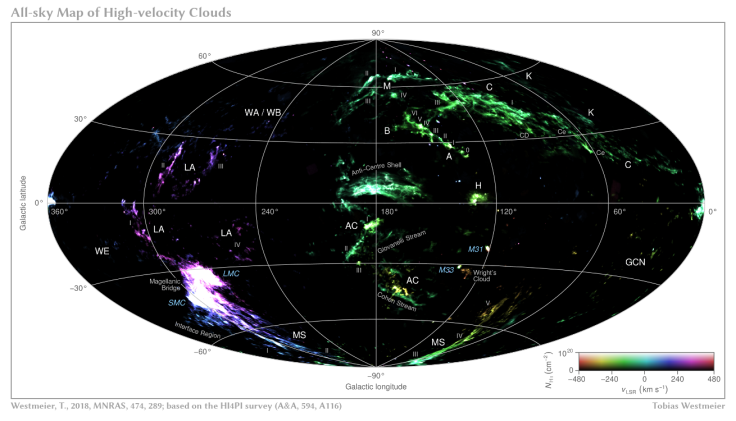Massive hydrogen clouds have been mapped moving at incredible speeds in the halo of the Milky Way
Their origins are still unknown, but theories suggest that they could be remnants of our galaxy's birth.

Mysterious clusters of hydrogen that travel across the Milky Way at incredible speeds called high-velocity clouds have now been mapped. These clouds are moving along the Halo or the circular outer edge of the galaxy.
Scientists have now created a detailed map of the clouds using data derived from radio telescopes, notes a report by Science Alert (SA). The map shows clumps, branches, and filaments inside the clouds – details that have never been seen before.
Astronomers from the International Centre for Radio Astronomy Research (ICRAR) put the map together. Tobias Westmeier, an astronomer from The University of Western Australia who worked on the map said, "It's something that wasn't really visible in the past, and it could provide new clues about the origin of these clouds and the physical conditions within them."
SA notes that these mysterious hydrogen clouds are massive, about 80,000 light years in diameter and with masses millions of times more than the Sun.
The high-velocity clouds are so called because of the speeds that they can reach – up to 70 to 90 km or more per second, says the report. "These gas clouds are moving towards or away from us at speeds of up to a few hundred kilometres per second," Westmeier said.
Westmeier identified the clouds by masking out all the gases that were moving at the same speed as the Milky Way, and then studying ones that were moving at a different pace. His team calculated that high velocity clouds covered at least 13% of the sky.
He used data collected from the "Full Sky HI4PI Survey", conducted with the Parkes Observatory in Australia and the Effelsberg 100m Radio Telescope in Germany, reports SA. The Full Sky HI4PI Survey was a measurement of the Galactic neutral atomic hydrogen's column density and brightness temperatures, according to a release from Cornell University.
Until now, scientists have been unable to figure out where these clouds come from. There are, however, possible explanations that the report mentions – material from outside the galaxy could be falling into the clouds, materials that escape the galaxy could be getting tangled up in them, or material that was leftover from Milky Way's formation could eventually end up in the clouds.
One of the clouds could have formed as a result of interactions between nearby Large and Small Magellanic clouds, hypothesise researchers. Other clouds are stump scientists as their compositions indicate varied origins. Some clouds are rich in heavy minerals and metals, while others are composed of material that is a lot less metallic than what is found in the Milky Way, notes the report.
Through this study, Westmeier hopes to inspire more research into these mysterious clouds and by extension, the very formation of the galaxy, notes SA.





















